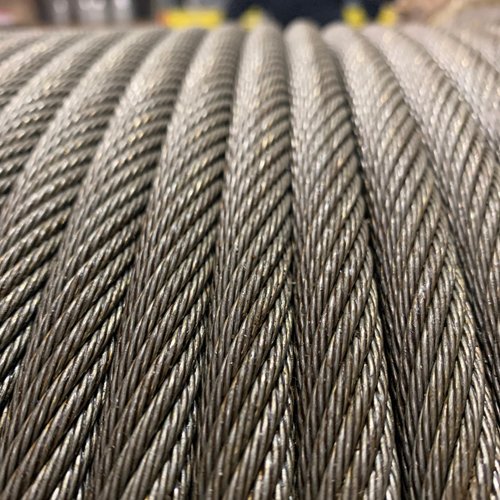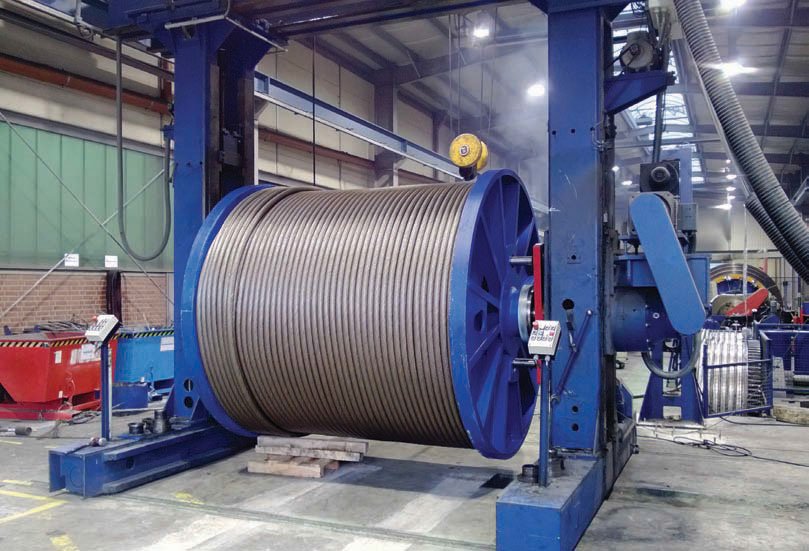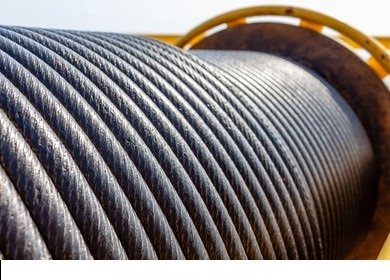Wire rope is a highly durable and versatile mechanical component composed of multiple strands of metal wires twisted helically around a central core. It is widely used in industries requiring high strength, flexibility, and resistance to abrasion or fatigue.
1. Structure
A typical wire rope consists of three main elements:
- Wires: Individual steel filaments (carbon steel, stainless steel, or specialty alloys).
- Strands: Groups of wires twisted together in a helical pattern.
- Core: The central component (e.g., fiber core [FC], steel core [SC], or synthetic core) that supports the strands and provides flexibility.
Common configurations include 6×19 (6 strands with 19 wires each) or 6×36, tailored for specific load and flexibility requirements.
2. Types of Wire Ropes
- Rotation-Resistant Rope: Minimizes twisting under load (e.g., for cranes).
- Compact Strand Rope: Higher density for improved abrasion resistance.
- Plastic-Coated Rope: Corrosion-resistant with a polymer outer layer.
- Stainless Steel Rope: Ideal for marine or chemical environments.
3. Key Applications
- Lifting & Hoisting: Cranes, elevators, and winches.
- Mining: Draglines, shafts, and conveyor systems.
- Transportation: Suspension bridges, cable cars, and aircraft controls.
- Marine: Ship rigging, mooring lines, and offshore platforms.
4. Advantages
- High Strength-to-Weight Ratio: Supports heavy loads with minimal bulk.
- Flexibility: Adapts to bending and dynamic movements.
- Durability: Resists wear, corrosion, and extreme temperatures.
- Safety: Engineered with redundancy (multiple wires) to prevent sudden failure.
5. Standards & Maintenance
- Standards: Manufactured to meet ISO 2408, ASTM A1023, or DIN norms.
- Inspection: Regular checks for broken wires, corrosion, or deformation.
- Lubrication: Essential to reduce friction and extend service life.
6. Terminology
- SWL (Safe Working Load): Maximum load capacity under normal conditions.
- Lay Direction: Right-hand lay (RH) or left-hand lay (LH).
- End Fittings: Swaged sockets, thimbles, or clips for secure connections.
Wire ropes are critical in modern engineering, balancing performance and safety. Selection depends on load requirements, environmental conditions, and operational lifespan.
For specialized applications, consult manufacturers for custom solutions.




